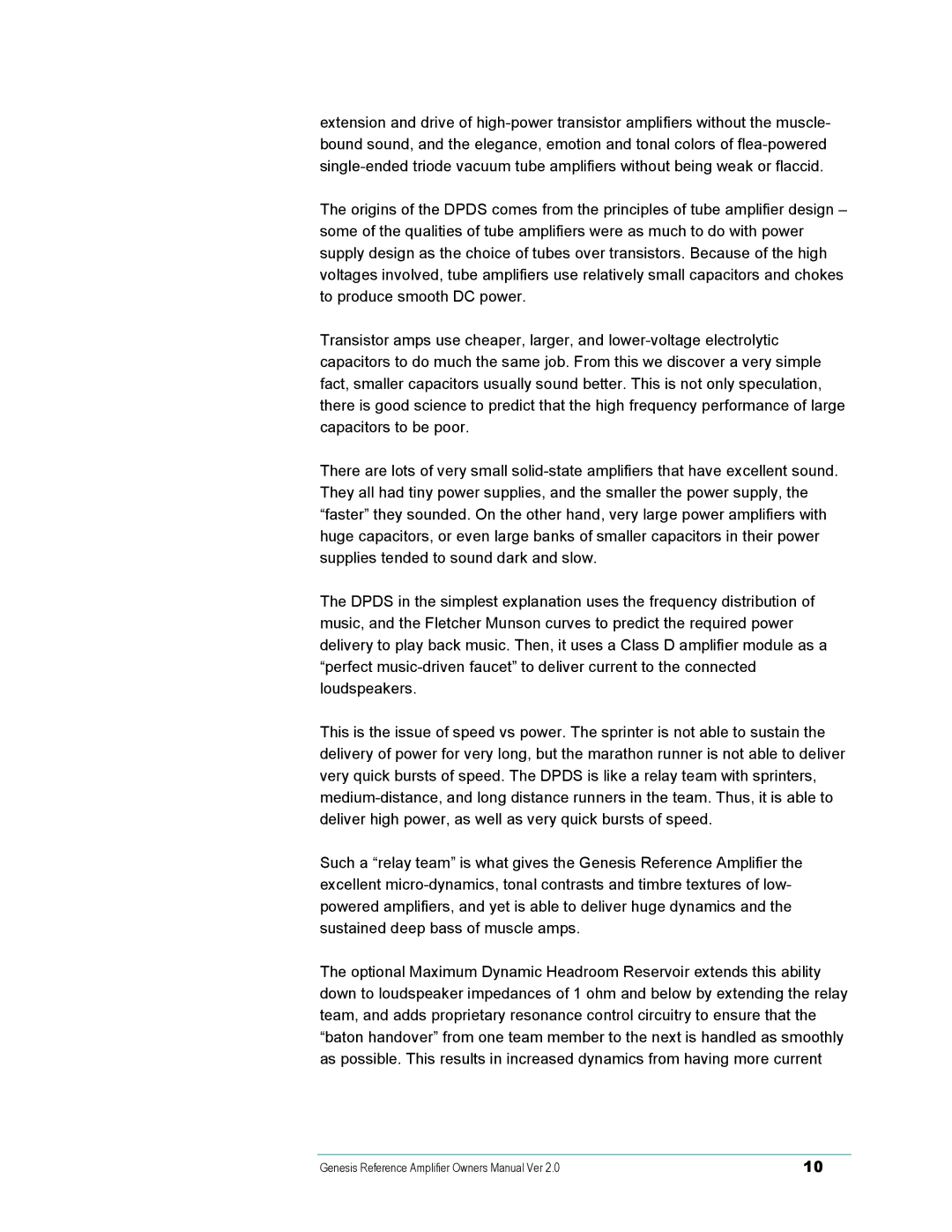extension and drive of
The origins of the DPDS comes from the principles of tube amplifier design – some of the qualities of tube amplifiers were as much to do with power supply design as the choice of tubes over transistors. Because of the high voltages involved, tube amplifiers use relatively small capacitors and chokes to produce smooth DC power.
Transistor amps use cheaper, larger, and
There are lots of very small
The DPDS in the simplest explanation uses the frequency distribution of music, and the Fletcher Munson curves to predict the required power delivery to play back music. Then, it uses a Class D amplifier module as a “perfect
This is the issue of speed vs power. The sprinter is not able to sustain the delivery of power for very long, but the marathon runner is not able to deliver very quick bursts of speed. The DPDS is like a relay team with sprinters,
Such a “relay team” is what gives the Genesis Reference Amplifier the excellent
The optional Maximum Dynamic Headroom Reservoir extends this ability down to loudspeaker impedances of 1 ohm and below by extending the relay team, and adds proprietary resonance control circuitry to ensure that the “baton handover” from one team member to the next is handled as smoothly as possible. This results in increased dynamics from having more current
Genesis Reference Amplifier Owners Manual Ver 2.0 | 10 |
